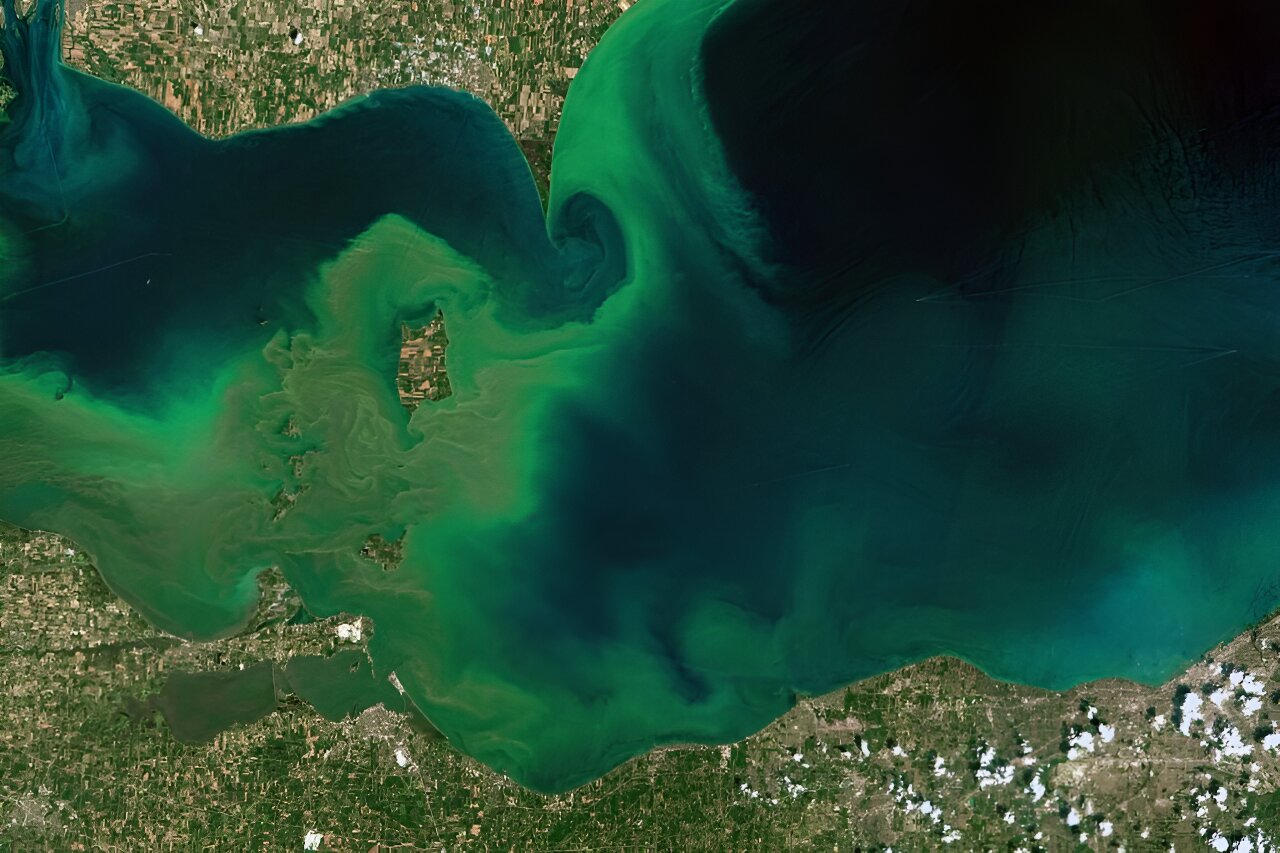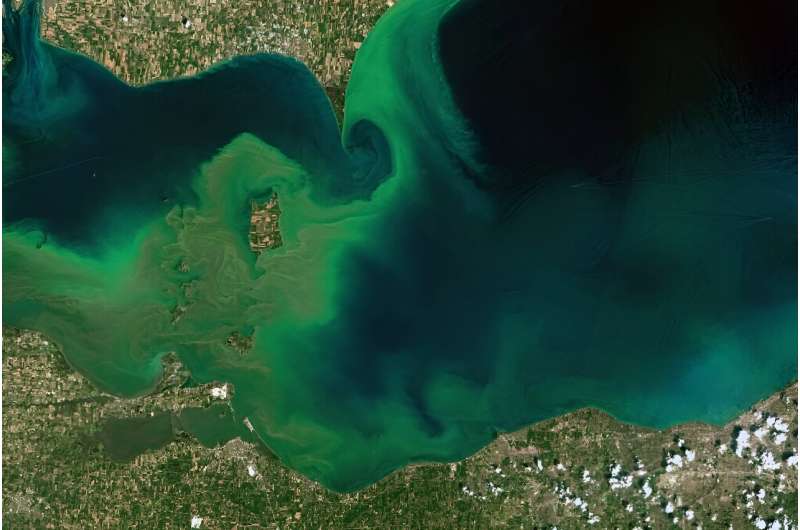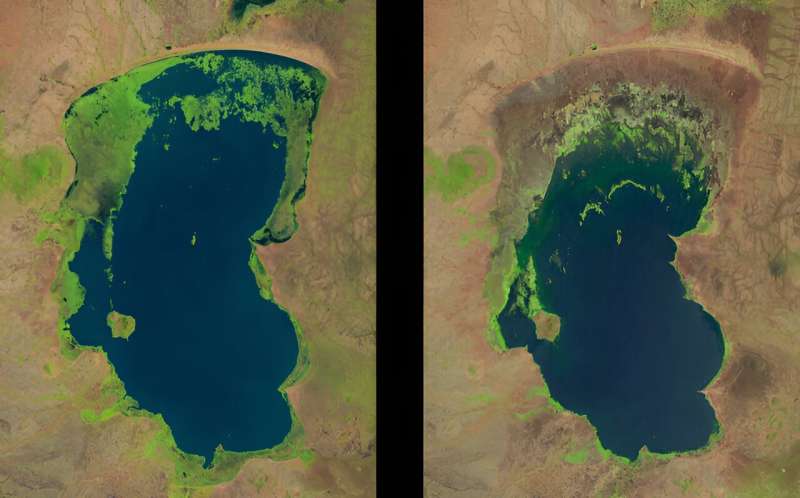

Nearly half of the world’s large lakes have lost resilience, or the ability to bounce back after an abrupt disturbance, in recent decades, according to the first global assessment of long-term changes in lake resilience. Lakes in eastern North America and northern Europe have been hit the hardest, and dense populations and pollution are largely to blame, the study suggests. However, wealthier regions had healthier lakes, suggesting costly conservation efforts may pay off.
Both people and climate can gradually shift lakes away from their natural, healthy state. Warmer temperatures can increase evaporation, decreased precipitation can lower lake levels, and persistent pollution can chip away at the lake ecosystem’s health. When sudden disturbances hit, such as heat waves, droughts or floods, a “resilient” lake can recover; a vulnerable one may not be able to return to its previous state.
Assessing a lake’s resilience, which takes into account its structure and ecosystem functions, is crucial for scientists predicting how it will respond to climate- and human-induced changes. But long-term trends of changes in lake resilience at a global scale—and why they happen—remain unknown. The new study, published in Geophysical Research Letters, fills in this knowledge gap.
“Tracking lake resilience is crucial because it allows us to detect early warning signs of ecosystem degradation,” said Ke Zhang, an environmental scientist at the State Key Laboratory of Lake Science and Environment at the Chinese Academy of Sciences who led the study. “It enables us to do timely interventions and prevent the irreversible catastrophic collapse of lake ecosystems, which can have severe socioecological consequences.”
Tracking lakes from space
Zhang and colleagues looked at comprehensive lake health and resilience and a mix of climate and human factors for 1,049 of the world’s largest and most important lakes, looking for changes from 2000 to 2018. A suite of statistical tests allowed the scientists to look for “flickers” and longer-term changes in a lake’s color, indicating changes in its health. If at least two of the statistical tests agreed, the researchers marked the lake as experiencing a change in resilience. The researchers analyzed lake area, depth and satellite-derived color in the context of each catchment’s temperature, precipitation, population density, and per capita gross domestic product (GDP).
Nearly half of the studied lakes worldwide significantly lost resilience over the study period, the researchers found. Most were between 30 and 60 degrees N, but the authors note that many of the world’s lakes are in the higher latitudes of the northern hemisphere, with more growing there under climate change.
On the other hand, about one quarter of studied lakes were getting more resilient—mostly at higher altitudes, and mostly because of an increase in glacial meltwater. The Tibetan Plateau and the Andes had the strongest gains in resilience as a result of glacial melt. Central North America, mostly in Canada, also saw an increase in lake resilience.
The researchers then divided the study period in half to see if any trends accelerated in recent years. From 2000 to 2009, roughly the same proportion of lakes experienced increasing and decreasing resilience, at 36% and 35%, respectively. But between 2010 to 2018, while 28% of lakes gained resilience, 39% lost resilience, indicating a pronounced shift in lake health. In recent years, 26.8% of lakes went from becoming more resilient to becoming less resilient between the two time periods. This pattern was particularly strong in eastern North America and northern Europe.
The results took the researchers by surprise.
“While we anticipated that human activities would significantly impact lake resilience, the extent of resilience decline—nearly half of the studied lakes—was alarming,” Zhang said. The findings could indicate many lakes are approaching irreversible ecological tipping points, the authors wrote.

What’s messing up our lakes?
Population density most strongly contributed to lakes’ loss of resilience, the study found, most likely linked to having higher concentrations of pollutants and higher degrees of landscape alteration.
Bigger lakes and lakes at higher elevations were more likely to be more resilient.
In most regions, human factors were more important than climate, but high-altitude regions such as the Tibetan Plateau were the clear exception. There, warmer air temperatures lead to glacial melting, which in turn allows lakes to grow larger and clearer. And in tropical and subtropical regions, climate matters because warmer temperatures increase the risk of algae blooms, which degrade water quality and lake health. However, each of these is only an association in this study and requires further research for validation, the authors say.
There is some good news. Many lakes in regions with higher GDPs are improving, which the authors posit is tied to efforts such as reforestation, sustainable land use and combating eutrophication. The pattern of more resilient lakes in high-GDP catchments suggests continued efforts focused on lake health could help, according to the authors.
“This trend is concerning and underscores the urgent need for effective management and restoration efforts to mitigate these impacts,” Zhang said. “But the positive correlation between higher GDP and increased resilience in some areas implies that economic development can be harnessed to invest in environmental protection and lake management.”
More information:
Yaoyao Han et al, Human Impacts Dominate Global Loss of Lake Ecosystem Resilience, Geophysical Research Letters (2024). DOI: 10.1029/2024GL109298
Provided by
American Geophysical Union
Citation:
Half of world’s lakes are less resilient to disturbance than they used to be (2024, June 25)
retrieved 25 June 2024
from https://phys.org/news/2024-06-world-lakes-resilient-disturbance.html
This document is subject to copyright. Apart from any fair dealing for the purpose of private study or research, no
part may be reproduced without the written permission. The content is provided for information purposes only.